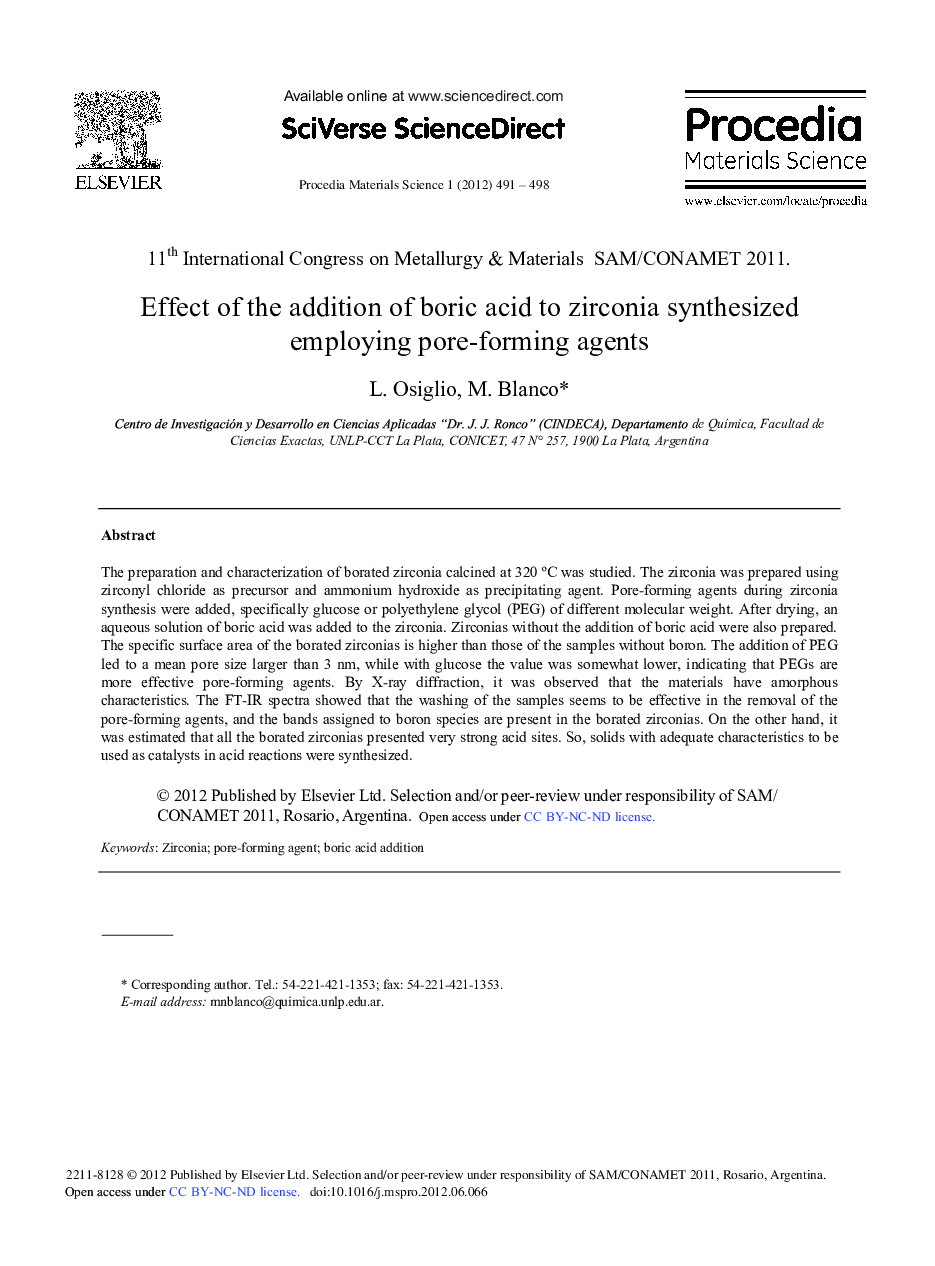| Article ID | Journal | Published Year | Pages | File Type |
|---|---|---|---|---|
| 1634913 | Procedia Materials Science | 2012 | 8 Pages |
The preparation and characterization of borated zirconia calcined at 320 °C was studied. The zirconia was prepared using zirconyl chloride as precursor and ammonium hydroxide as precipitating agent. Pore-forming agents during zirconia synthesis were added, specifically glucose or polyethylene glycol (PEG) of different molecular weight. After drying, an aqueous solution of boric acid was added to the zirconia. Zirconias without the addition of boric acid were also prepared. The specific surface area of the borated zirconias is higher than those of the samples without boron. The addition of PEG led to a mean pore size larger than 3 nm, while with glucose the value was somewhat lower, indicating that PEGs are more effective pore-forming agents. By X-ray diffraction, it was observed that the materials have amorphous characteristics. The FT-IR spectra showed that the washing of the samples seems to be effective in the removal of the pore-forming agents, and the bands assigned to boron species are present in the borated zirconias. On the other hand, it was estimated that all the borated zirconias presented very strong acid sites. So, solids with adequate characteristics to be used as catalysts in acid reactions were synthesized.
